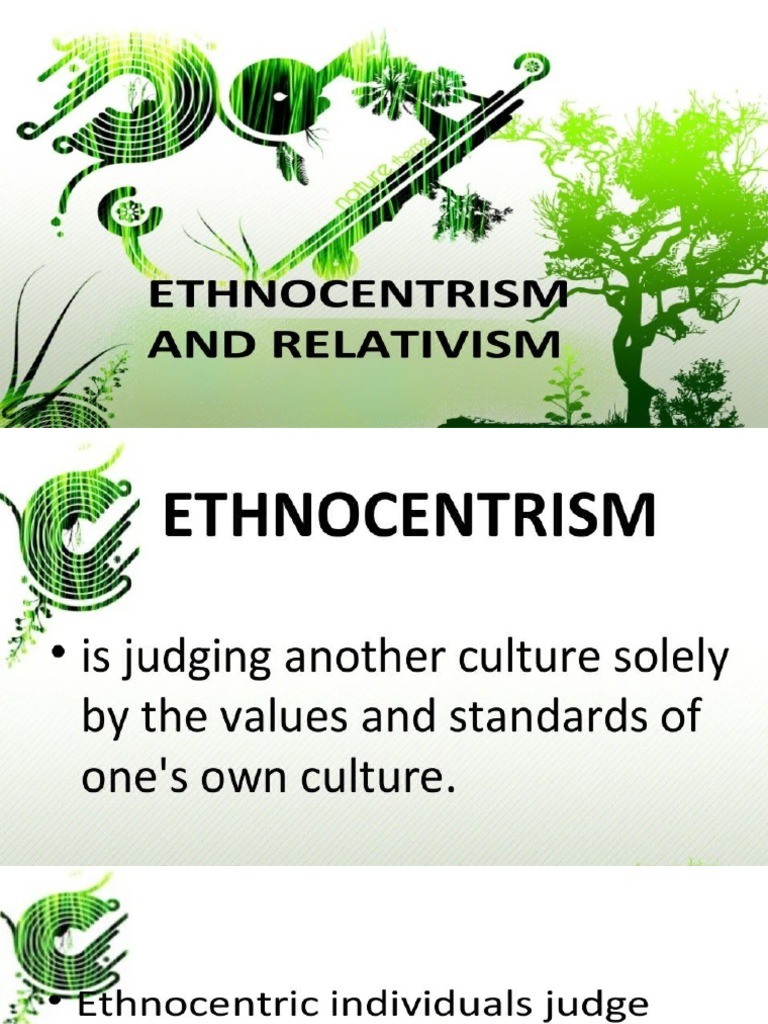Cultural relativism and ethnocentrism represent two fundamental perspectives that shape our understanding of cultural differences and their implications in a globalized world. These concepts not only influence interpersonal interactions but also inform broader societal attitudes toward diversity. To create a compelling poster about these themes, it is necessary to dissect their definitions, implications, and the interplay between them, ultimately revealing the complexities inherent in human cultures.
At its core, **ethnocentrism** is the tendency to evaluate other cultures through the lens of one’s own cultural norms and values. This evaluative approach often leads to the perception that one’s own culture is superior, which can incite various forms of discrimination and prejudice. In stark contrast, **cultural relativism** advocates for understanding cultural practices within their own contexts and values. This perspective encourages empathy and a deeper appreciation for cultural diversity, allowing for a more nuanced comprehension of human behavior.
One might observe that many individuals possess an instinctual urge to judge unfamiliar cultures based on familiar benchmarks. This is not merely a superficial behavior; rather, it often stems from a profound psychological inclination to seek comfort in the known, coupled with an unconscious fear of the unknown. The human experience is replete with such tendencies, and they serve as a powerful lens through which people interpret the world around them.
Examining the **cultural relativism** ideology further, it becomes evident that cultural practices—whether they be rituals, beliefs, or social norms—are embedded with historical context and significance. For instance, consider the practice of sati in certain historical Hindu contexts, whereby a widow would self-immolate on her husband’s funeral pyre. Initially, an ethnocentric viewpoint may label this practice as barbaric; however, through cultural relativism, one begins to understand its roots in a complex interplay of cultural values, gender roles, and societal expectations of the time. Thus, cultural relativism invites observers to delve deeper, fostering insights that surpass surface-level judgments.
Engaging with these concepts invites introspection, necessitating awareness of one’s biases and assumptions. Ethnocentrism can manifest in various contemporary forms, whether through microaggressions in daily life or macro policies that perpetuate inequality. A stark example is seen in global dialogues surrounding immigration; often, immigrants are viewed through an ethnocentric lens that frames their cultural practices as foreign and, therefore, less valuable or inferior. This not only continues cycles of discrimination but also impoverishes societies by rejecting the potential contributions of diverse cultures.
Conversely, cultural relativism promotes a perspective that embraces difference and acknowledges the validity of alternative worldviews. By advocating for a pluralistic approach, societies can cultivate enriched environments where diverse cultural expressions coexist harmoniously. However, it is imperative to acknowledge the criticisms of cultural relativism as well. One concern is the potential for moral complacency; if one accepts all cultural practices as equally valid, it may lead to the justification of harmful customs. Hence, striking a balance between respect for cultural diversity and the promotion of universal human rights remains a critical challenge.
In crafting a visually engaging poster, incorporating powerful imagery alongside succinct text can profoundly convey these complex ideas. Images depicting various cultural practices alongside brief explanations can illustrate the foundational tenet of cultural relativism: that there is no singular path to human existence. Inclusively representing different cultures invites viewers to engage mindfully with the material, fostering a sense of curiosity and openness to unfamiliar practices.
Moreover, employing thought-provoking questions on the poster can stimulate dialogue among viewers. Questions such as “How can we foster cultural empathy in our increasingly interconnected world?” or “In what ways does our cultural background shape our perception of others?” can encourage reflection and discussion, bridging gaps between diverse groups. This reflective approach is essential, particularly in a world marked by cultural tensions, to facilitate greater understanding.
The poster could also incorporate quotes from influential thinkers in cultural studies. For example, a quote from anthropologist Ruth Benedict, who famously stated, “The human individual is not a fixed quantity, but a flowing stream,” encapsulates the dynamic nature of culture and its evolution. Such quotes can serve as profound touchpoints, inviting viewers to ponder deeper meanings while enriching the visual experience of the poster.
Ultimately, the juxtaposition of cultural relativism and ethnocentrism serves as a potent reminder of the importance of perspective in our understanding of cultures. As societies continue to navigate the complexities of global interconnectedness, engaging with these concepts becomes ever more necessary. A well-crafted poster can act as an educational tool, promoting awareness, empathy, and dialogue. By recognizing the intricate layers that shape individual and collective identities, we can foster a world that values diversity, cultivates understanding, and embraces the richness of the human experience.
In conclusion, encouraging an ethos of cultural relativism over ethnocentrism not only enhances individual interactions but also cultivates the potential for a more equitable and harmonious global society. The journey toward understanding and celebrating cultural diversity is ongoing, marked by both challenges and opportunities that await those willing to engage in the dialogue.
